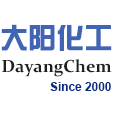Products Categories
| CAS No.: | 1313-27-5 |
|---|---|
| Name: | Molybdenum(VI) oxide |
| Article Data: | 2 |
| Molecular Structure: | |
|
|
|
| Formula: | MoO3 |
| Molecular Weight: | 143.938 |
| Synonyms: | Bouen SKN301;JCPDS 35-0609;MFR;Molybdena;Molybdenumoxide (Mo4O12);Molybdenum oxide (MoO3), tetramer;Molybdenum trioxide;Molybdenum trioxidetetramer;Molybdenum(VI) oxide;Molybdic anhydride;Molybdic oxide;NSC 215191;Pol-U;Molybdenum(Ⅵ)oxide; |
| EINECS: | 215-204-7 |
| Density: | 4.692 g/cm3 |
| Melting Point: | 1155 °C |
| Boiling Point: | 1155oC |
| Flash Point: | 1155oC subl. |
| Solubility: | 0.5 g/L (20 °C) in water |
| Appearance: | pale yellowish-green powder |
| Hazard Symbols: |
 Xn, Xn, Xi Xi
|
| Risk Codes: | 36/37-48/20/22 |
| Safety: | 22-23-25 |
| PSA: | 51.21000 |
| LogP: | -0.35640 |
- 144851-82-1METHYL2-AMINO-3-FLUOROBENZOATE
- 483366-12-7(2S,4R)-1-Boc-2-cyano-4-hydroxypyrrolidine
- 173606-50-3BOC-10-AMINODECANOIC ACID
- 361456-36-2METHYL (R)-(+)-ISOCYANATO-3-PHENYLPROPI&
- 5156-58-1N-(1-Benzyl-4-pipperidinyl)-N-phenylpropanamide HCl
- 81281-59-67-Benzylideneaminotheophylline
- 50288-62-5threo-Phenyl-2-piperidyl acetamide
- 82993-81-5D-threo-Ritalinic acid hydrochloride
- 47087-37-6Z-D-Glu-OMe
- 73441-42-6METHYL-5-CHLORO-2,2-DIMETHYLVALERATE
- 126031-97-8
{MoCl3(C5H4N)2(H2O)}

- 1313-27-5
molybdenum trioxide

| Conditions | Yield |
|---|---|
| decompn. at 390-400°C; |

| Conditions | Yield |
|---|---|
| Stage #1: molybdenum trioxide With sodium hydrogen sulfide In water for 0.5h; Sealed tube; Stage #2: carbon disulfide; dibenzylamine With hydrogenchloride In water; toluene at 20 - 100℃; for 4.5h; Sealed tube; | 93% |


| Conditions | Yield |
|---|---|
| at 25℃; for 2191.5h; pH=Ca. 4; | 70% |


| Conditions | Yield |
|---|---|
| In water at 20℃; for 24h; | 63% |
- 917-23-7
5,15,10,20-tetraphenylporphyrin

- 1313-27-5
molybdenum trioxide

- 28780-74-7
(hydroxy)(oxo)(5,10,15,20-tetraphenylporphyrinato)molybdenum(v)

| Conditions | Yield |
|---|---|
| With phenol at 180.84℃; for 4h; | 60% |

| Conditions | Yield |
|---|---|
| at 230℃; for 24h; Autoclave; | 50% |


- 56643-83-5
1,4-bis(imidazol-l-yl-methyl)benzene

- 1313-27-5
molybdenum trioxide

| Conditions | Yield |
|---|---|
| With copper(II) nitrate trihydrate In water at 160℃; for 144h; pH=Ca. 3.5; Autoclave; High pressure; | 38% |


- 1313-27-5
molybdenum trioxide

| Conditions | Yield |
|---|---|
| Stage #1: molybdenum trioxide With sodium hydrogensulfide In water at 25℃; for 3h; Inert atmosphere; Stage #2: potassium 4-(2-decyltetradecyl)-1-piperazinedithiocarbamate With hydrogenchloride In tetrahydrofuran; water at 90℃; for 18h; | 36.5% |

| Conditions | Yield |
|---|---|
| In water at 90℃; for 20h; |

| Conditions | Yield |
|---|---|
| In neat (no solvent, gas phase) byproducts: Mo(x)O(y)(CH2)(1+), Mo(x)O(y)(C2H4)(1+), Mo(x)O(y)(CH4)(1+); study on formation of molybdenum carbene complexes; monitored by ICR mass spectrometer; |
- 61337-67-5Mirtazapine
- 123-38-6Propionaldehyde
- 633-03-4Basic Green 1
- 2720-73-2Potassium amylxanthate
- 22722-98-1Aluminate(1-),dihydrobis[2-(methoxy-kO)ethanolato-kO]-, sodium (1:1)
- 1338-39-2Span 20
- 57028-96-3Polyhexamethyleneguanidine hydrochloride
- 27306-78-1Poly(oxy-1,2-ethanediyl),a-methyl-w-[3-[1,3,3,3-tetramethyl-1-[(trimethylsilyl)oxy]-1-disiloxanyl]propoxy]-
- 104987-11-3Tacrolimus
- 141-53-7Sodium formate
- 8001-54-5Quaternary ammonium compounds, alkylbenzyldimethyl, chlorides
- 9003-39-8Povidone
- 10161-34-9Trenbolone acetate
- 402957-28-2Telaprevir
- 68-19-9Cyanocobalamin

What can I do for you?
Get Best Price
Consensus Reports
Reported in EPA TSCA Inventory.
Standards and Recommendations
OSHA PEL: TWA 5 mg(Mo)/m3
ACGIH TLV: TWA Soluble Compounds: TWA 0.5 mg(Mo)/m3 Confirmed Animal Carcinogen with Unknown Relevance to Humans
Specification
The Molybdenum trioxide, with the CAS registry number 1313-27-5, is also known as Molybdenum(VI) oxide. It belongs to the product category of Inorganics. Its EINECS registry number is 215-204-7. This chemical's molecular formula is MoO3 and molecular weight is 143.94. Its IUPAC name is called trioxomolybdenum. This chemical's classification codes are Human Data; Mutation data; Tumor data.
Physical properties of Molybdenum trioxide: (1)H-Bond Donor: 0; (2)H-Bond Acceptor: 3; (3)Rotatable Bond Count: 0; (4)Exact Mass: 145.890152; (5)MonoIsotopic Mass: 145.890152; (6)Topological Polar Surface Area: 51.2; (7)Heavy Atom Count: 4; (8)Formal Charge: 0; (9)Complexity: 61.8; (10)Covalently-Bonded Unit Count: 1.
Preparation: this chemical can be prepared by ammonium molybdate.

Uses of Molybdenum trioxide: it is used to manufacture molybdenum metal, which serves as an additive to steel and corrosion-resistant alloys. It is also a component of the co-catalyst used in the industrial production of acrylonitrile by the oxidation of propene and ammonia. Because of its layered structure and the ease of the Mo(VI)/Mo(V) couple, MoO3 is of interest in electrochemical devices and displays.
When you are using this chemical, please be cautious about it as the following:
This chemical may cause damage to health and may cause inflammation to the skin or other mucous membranes. It is harmful by inhalation and if swallowed. In addition, it is irritating to eyes and respiratory system. You should not breathe its gas/fumes/vapour/spray (appropriate wording to be specified by the manufacturer). What's more, you must avoid contacting it with eyes.
You can still convert the following datas into molecular structure:
(1)Canonical SMILES: O=[Mo](=O)=O
(2)InChI: InChI=1S/Mo.3O
(3)InChIKey: JKQOBWVOAYFWKG-UHFFFAOYSA-N
The toxicity data is as follows:
| Organism | Test Type | Route | Reported Dose (Normalized Dose) | Effect | Source |
|---|---|---|---|---|---|
| guinea pig | LD75 | intraperitoneal | 400mg/kg (400mg/kg) | Environmental Quality and Safety, Supplement. Vol. 1, Pg. 1, 1975. | |
| man | TCLo | inhalation | 6mg/m3/4Y (6mg/m3) | LUNGS, THORAX, OR RESPIRATION: "FIBROSIS, FOCAL (PNEUMOCONIOSIS)" LUNGS, THORAX, OR RESPIRATION: COUGH | National Technical Information Service. Vol. AEC-TR-6710, |
| mouse | LD50 | intraperitoneal | 141mg/kg (141mg/kg) | LUNGS, THORAX, OR RESPIRATION: OTHER CHANGES | Gigiena Truda i Professional'nye Zabolevaniya. Labor Hygiene and Occupational Diseases. Vol. 9(6), Pg. 40, 1965. |
| mouse | LD50 | subcutaneous | 94mg/kg (94mg/kg) | Zhurnal Vsesoyuznogo Khimicheskogo Obshchestva im. D.I. Mendeleeva. Journal of the D.I. Mendeleeva All-Union Chemical Society. Vol. 19, Pg. 186, 1974. | |
| rat | LC50 | inhalation | > 5840mg/m3/4H (5840mg/m3) | Cyprus Copper Company. Vol. 18JUN1991, | |
| rat | LD50 | oral | 2689mg/kg (2689mg/kg) | Cyprus Copper Company. Vol. 18JUN1991, | |
| rat | LD50 | skin | > 2gm/kg (2000mg/kg) | Cyprus Copper Company. Vol. 18JUN1991, |
-
Premium Related Products

